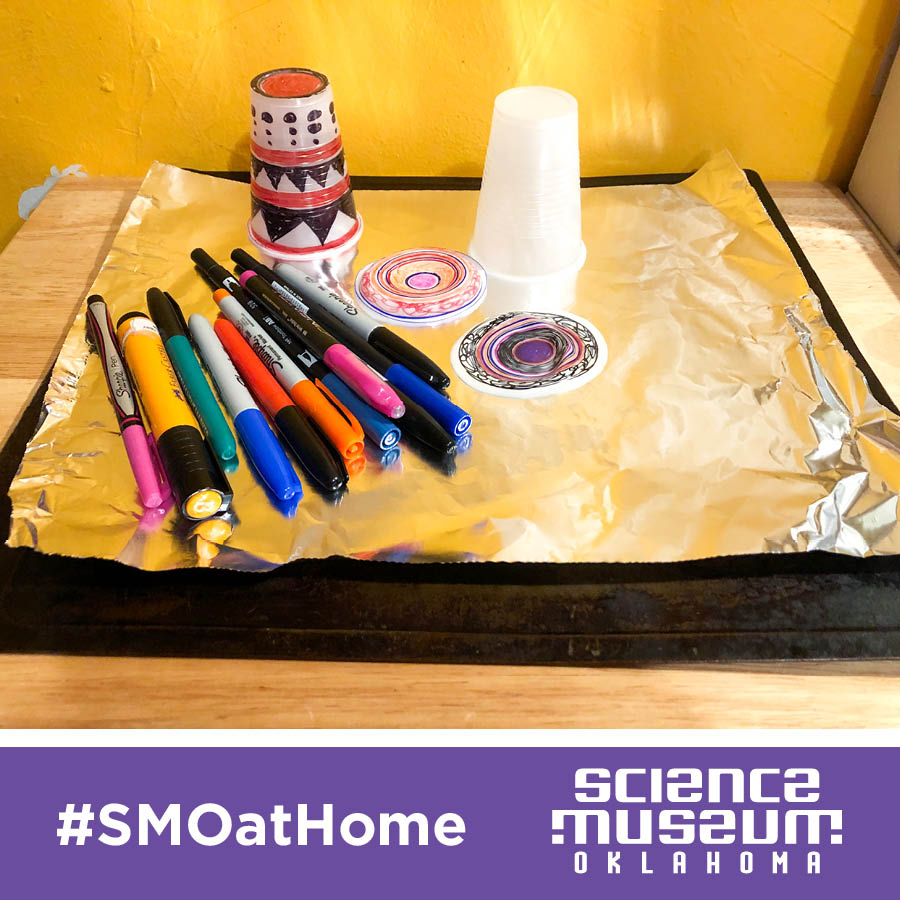Try This: Shrink a Cup into Art
Many of us are trying to live more sustainably, but these days you may be even more likely than before to be handed a plastic disposable cup! Instead of putting it in the recycling bin after you enjoy the refreshment, check to see what recycling number it is.
Each recycling number tells us a little bit about the plastic being used in the product, including characteristics of the material, and if your recycling program will take it.
Plastic always needs to be rinsed out before it can be recycled, so start there. If the cup has a recycle number of “6,” it’s polystyrene and is shrinkable! Rather than recycling it, you can repurpose it into an art project.

Here’s what you need:
- Recyclable #6 plastic cup
- Permanent markers
- Aluminum foil
- Olive oil or nonstick spray
- Cookie sheet or pizza pan
- An oven
- An oven mitt
- *Optional - scissors
Here’s what to do:
1. Preheat the oven to 325 degrees Fahrenheit. You can try other temperatures, but we find this works well.
2. Using permanent markers, color the outside of the plastic cup.
3. Place aluminum foil on the cookie sheet or pizza pan and coat with a very tiny amount of olive oil or nonstick spray.
4. Place the cup on the cookie sheet and put it all in the oven. After about one minute, peek inside and see what’s occurring. After a couple minutes, the cup will have become a disc. Once the cup is flat, remove it from the oven and let it rest for a minute or more.
Your project is done! Next time you find yourself with a #6 recyclable plastic cup, you may choose to change the project subtlety. If you cut the cup, can you make a butterfly?
What is happening:
Cups are an example of radial symmetry. Look at the center of the bottom of the cup, the sides and all parts of the cup radiate out from the center equally. Examples of radial symmetry include snowflakes, pies, and even starfish. When the cup shrank into a disc, for the most part it remained radial symmetric.
Your project shrank because the plastic identified as #6 is polystyrene. The polymers that make up this plastic have a tendency to be disorganized and clumped together.
To make the polystyrene into usable shapes, like the cup, it’s heated, rolled, and rapidly cooled. When the polystyrene is cut and heated again, the polymers bunch back up into their more disorderly arrangement. As a result, the plastic shrinks.
Though the polystyrene appears smaller, it is now much thicker! When the plastic becomes more dense, the color becomes darker as well. Though the appearance has changed, its mass has not. If you shrink some cups, show us with #SMOatHome!








